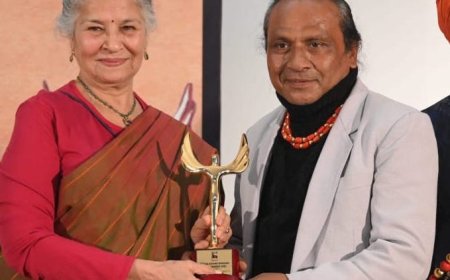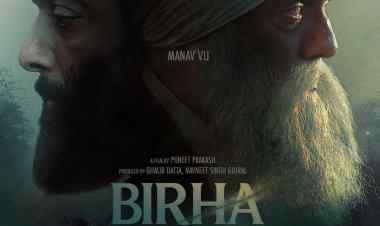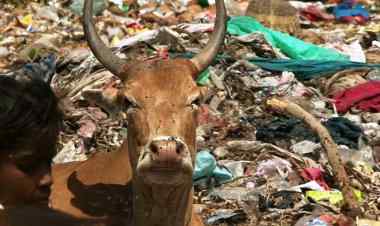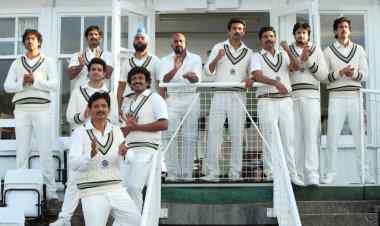Film Review: DATTA AND THE CELLULOID RESURRECTION OF SARAT CHANDRA CHATTOPADHYAY
Dr. Shoma A. Chatterji, noted Indian film scholar and author, writes on the film, "Datta".
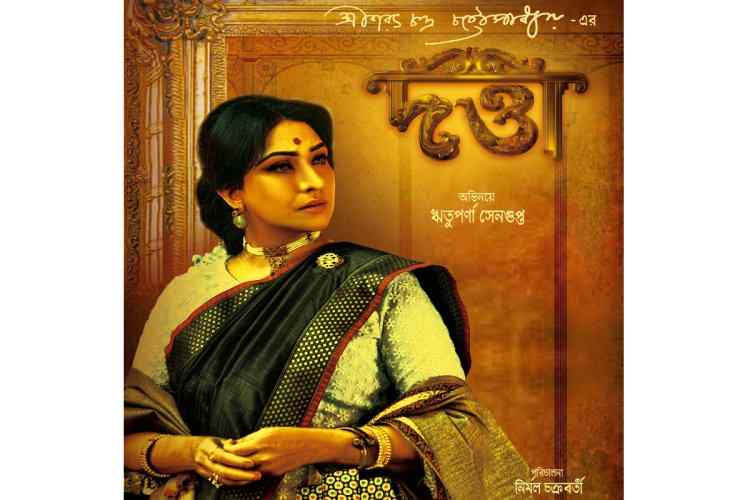
Datta, a film based on a classic by Sarat Chandra Chattopadhyay, marking the directorial debut of Nirmal Chakraborty, an established press photographer, was recently released in theatres in West Bengal. It stars Rituparna Sengupta in the title role of Bijoya (Datta), supported by Joy Sengupta as Naren, Saheb Chattopadhyay as Bilas Bihari and Biswajeet Chakraborty as his father Rashbehari. The late Pradip Mukherjee appears as Dayal Babu. However, the sad reality of this film lies in its making filled with hiccups all the way that took the producers Bhabna Aaj O Kaal four long years to reach the finishing post of this obstacle race.
Datta, meaning ‘betrothed’ was published serially in the noted literary journal in Bengal Bharatbarsha from Poush of the Bengali year 1324 to Bhadra of the Bengali year 1325. It appeared in book form on September 2, 1918 by GCS. Datta was translated into Marathi by Pravakar Vase as Bijaya in 1919. Sarat Chandra Chattopadhyay wrote a dramatised version of the novel and titled it Bijoya. The Gujarati translation of the novel was done by Krishna Prasad Shastri in 1921 under the title Sreemati Vijoya while T.K. Rama Menon translated it into Malayalam in 1937 titled Narendrababu.
Film versions of the novel were also made in different periods of time. Vagdanam, a Telugu film made by Acharya Atreya was made in 1961. Ajoy Kar made Datta starring Suchitra Sen in 1976, a couple of years before she stopped acting for good. In 1991, a Hindi telefilm called Bijaya was made with Sumita Sengupta in the title role. Though rooted in rural Bengal, Datta plays around the theme of love so beautifully that it remains timeless and universal till this day.
I am calling this film a ‘resurrection’ because filmmakers today have almost forgotten this great litterateur who was once the favourite of filmmakers across the country and the most famous for the many interpretations of his classic tragedy Devdas.
Datta is as much Bijoya’s story as it is Naren’s. But as the title of the story is a giveaway to Bijoya, the ‘betrothed’ she dominates the scene and evolves along with the story while Naren remains the same in the end as he was when the film began – good-natured, straight-talking, naïve, strong, kind-hearted and generous. Suchitra Sen as Bijoya was 45 when the film was made, almost at the fag-end of her career comprised of 60 films. Rituparna Sengupta has played Bijoya at a more senior age. It must have been quite challenging for her to play a role immortalized by the incomparable Suchitra Sen but she took on the challenge and has tried her best to live up to it.
Bijoya’s is a solid, author-backed role from the opening frame of the film where followed by visuals closing up on her face – beautiful, dignified and regal, we see her stepping down from the horse carriage to step into her heritage home after having lived in the city for years. From this point on, till the last scene that shows Naren and Bijoya right in the midst of a marriage ritual, Rituparna Sengupta holds on to her character strongly though somewhat weakened by the performance of Naren portrayed by the younger actor Joy Sengupta. Shaheb Chatterjee as Bilash Bihari who tries to control every action, interaction and space Bijoya occupies, is also very good but would have been more convincing had his wig not been so ugly and obvious. Joy Sengupta complements Rituparna very well with his simple, straightforward performance, his easy repartee, unsuspecting of the impact he is making on this beautiful woman.
The microscope functions as ‘agency’ in the ups and downs of the evolving love between Naren and Bijoya unknown to themselves. Naren wishes to sell the microscope to be able to gather funds to go to Burma. Bijoya offers to buy it and this sets off a chain of interactions between the two that both bring them together and set them apart several times. Bijoya’s behavior reveals that her attraction towards Naren is something she is conscious of and happy about. But Naren, though he is attracted too, is not very aware of his growing feelings for her. The awareness comes later in another poignant scene when, seeing her come out to meet him in the living room, he says, “Great! You are looking beautiful. I used to paint when I was in London and had I been into painting today, I would have wanted to paint you.” She stands speechless at this open admiration from the man she is falling in love with.
When she is introduced to Nalini, Dayal Babu’s niece who has come to visit her uncle during the summer vacations, Bijoya finds herself immediately suspecting something between Nalini and Naren, a natural trait for any woman in love when she sees another young woman beside the man she is in love with even when she is engaged to another man. Her hopes rekindled when she learns that Nalini is already engaged to someone else because by then, her marriage is just two days away.
Chakraborty has made several changes to the original novel which does not go against the story but could be read as innovative improvisations. The setting of the entire film is too static for comfort because a major slice of the interactions between and among the characters remains confined to the drawing room and most of the characters are seated on comfortable sofas and settees as they converse or argue or try to insult or humiliate Naren which he very innocently avoids. This turns the film into too static an attempt because despite the inner turmoils in Bijoya’s character, these are kind of flattened in effect on screen.
The songs (Joy Sengupta) are very good, especially one number, but their positioning within the script is not and do not necessarily blend into the narrative or the visuals. In fact, the mid-shots and long-shots of Bijoya when she comes outdoors to the river bank to find Naren busy fishing, the horizon looks beautiful and the characters offer beautiful relief against Nature which is perhaps, a character in every Sarat Chandra story. Malay Laha’s editing did not need to face too many challenges as most of the happenings were confined to closed spaces indoors.
Despite her submissive appearance and feminine grace, Bijoya is her own woman and takes almost all the decisions about her subjects, her village and even tries her best to take decisions about her life that get thwarted by the efforts of Rashbehari and his ill-mannered son. In one scene, when Bilash Bihari, finding Dayal Babu in Bijoya’s room, rebukes him for remaining absent from work (though he knows Dayal had fever), as some very important work is pending, an angry Bijoya lashes out to him and says, “why did you not do it yourself then? Are you not being paid a salary of Rs.200 every month? If you cannot do your work, I am sacking you right now.” A repentant and humiliated Bilash Bihari is roundly rebuked by his father when he goes to complain for spoiling his chances of gaining ownership of Bijoya’s estate once he gets married to her.
Datta is a very cinema-friendly novel even today. The characters are either black (Rashbehari and Bilashbihari) or pristine white (Bijoya, Naren, Dayal Babu, Nalini, the household staff) where shades of gray are conspicuous by their absence. This must have been both easy and challenging for the debutant director Nirmal Chakraborty to ensure aesthetic beauty, social statement and box office returns for the film all at the same time. The Brahmo-Brahmin debate is avoided quite diplomatically by Bijoya, a Brahmo herself, who says that the traditional Durga Pooja of the Hindu community in the village must go on. Naren is Brahmin, but very poor as his house and everything he owned has been confiscated by the clever designs of Bilash Bihari and the only object he possesses is the microscope.
Sengupta is very particular of realising the period of the film through her close attention to the beautiful Bengali sarees and the period blouses she wears and this extends to Nalini (Devlina Kumar) in her brief but well-enacted role as Dayal Babu’s daughter. But the fact remains that Sengupta looks a bit too old for the character. She is a natural beauty so it is not really necessary for her to lean too much on facial make-up. In the original novel, Bijoya was 18 but in this film, though the updating justifies the advancing of age, it makes Sengupta look much older than she ought to have looked because Joy certainly looks younger beside her. But her performance is very good and it would be grossly unfair to compare this with Suchitra Sen’s performance in the 1976 Datta.
Sengupta needs to shed her star charisma to slip into classic roles in period films like Datta. She has it in her but is somehow diffident about shedding her star aura to ‘become’ Bijoya. Though it is nearly impossible for the audience to see beyond Suchitra Sen, the fact remains that Rituparna Sengupta, as an actress with a long track record of good cinema behind her, including the National Award and many more awards over the years, can still demand the opportunity, the space and the story to reach out and go back to offer us a glimpse of Rituparna in films like Paromitar Ek Din and Dahan.
Sarat Chandra’s works have a sense of timelessness, a universality that makes them both cinema-friendly and topical for filmmakers. When directors’ fascination for this author seemed to be fading, one Nirmal Chakraborty comes and upsets the apple cart. The audience never fails to be trapped by its transient hypnosis. The social and domestic ambience in his novels may belong to days long past, but the story interest, the romance of his characters, the fluid and dramatic changes in their inter-relationships hold the reader and the audience in a trance, never mind any question of credibility or logic they might raise.
Please take a bow Nirmal Chakraborty for picking up the gauntlet with your very first directorial feature that carries a story of a four-year-long struggle yet, with your dedicated team of technicians and actors, have been able to make a bold statement on celluloid.
***
What's Your Reaction?





































